08 May Preparing your garden for the big return to work
Once lockdown has lifted most of our gardens will have to adapt changes in the way they are used and maintained. Here are some tips on preparing your plot so that it won’t look abandoned after the big return to work.
Speaking personally, working from home has meant that my garden has had a lot more attention than normal. I’ve got a vegetable plot established, I’ve planted up some colourful displays in pots and my barbeque has never been busier. Once lockdown has lifted, the children go back to school and I’m back out, checking on projects and running the office, my garden maintenance regime will probably be quite different. I just won’t have the same amount of time for watering and tweaking. Summer is coming too and I’m looking forward to spending free time enjoying the weather with family. So I’m thinking ahead and putting in some measures that will reduce maintenance time without impacting on aesthetics.
Here are my tips for preparing your garden for the big return to work so that it will stay as lovely as it is right now, despite a change in use.
Mulching beds, borders and containers
My number one tip for reducing maintenance in any garden, anywhere with any soil type is mulching. Add a layer of material on top of the soil to keep the moisture in and to suppress weed growth.
My go-to mulch for borders is woodchip or bark. It’s cost effective, readily available, compostable and attractive. Weed first and then spread a nice thick layer of mulch over the whole area. Anything less than 5cm thick is not going to be particularly effective, so be generous. Avoid putting mulch too close to plant stems though – ventilation is important so a 1-2cm circle around each plant is important.
These young plants are protected from weed infestation by a thick layer of woodchip mulch
If perennial weeds are a problem, you could put down 5 or 6 layers of newspaper beneath the barkmulch. (Cardboard packaging is good too – a great way to recycle those Amazon boxes!). The paper will make it much more difficult for weeds to push through but unlike weed-proof membranes, you won’t be adding plastic into the environment and the paper/card will gradually compost down into plant nutrients.
In the veg plot, I like to use a good quality compost for mulching – it looks neat and can easily be incorporated into the soil when the crop has finished.
Don’t forget to mulch around containers too. I tend to use a mulch that makes the plants look better and creates the growing conditions they love. For some containers I’ll use compost, for others, a nice layer of ornamental aggregates is more attractive.
Setting up an easy watering system
For some plants, mulching isn’t going to be enough to keep them hydrated all through the summer. Many will need extra watering. If your garden is home to any of the following, you might want to install an irrigation system before you return to work.
- Recently trees and shrubs
- Freshly laid turf
- Fruit bushes
- Vegetable plants
- Plants in containers
- Anything growing in a greenhouse or poly tunnel
Much as I love to see a lush green lawn, I will never even consider watering an established lawn. Mother Nature lets grass go brown in hot weather for a reason. It will be OK. No need to waste water. Newly laid turf on the other hand MUST be kept moist until the roots have grown deep into the soil.
Modern day irrigation systems are relatively simple to set up and can even be operated from a phone app. For a small garden, buy supplies online and build your own system. If your garden is complicated, then give the Tapestry Team a call, we can design an irrigation system for you and help you find a reputable landscaper to install it.
Another maintenance saving tip is to ask a garden designer to create a planting plan using low maintenance plants.
This planting was designed by Katie at Tapestry Design Studios and brings lots of colour into the garden with minimal attention from the owners.
Lower maintenance lawn care
Believe it or not, I find that letting your lawn grow a tad longer and mowing little and often is the best way to reduce the time you spend on lawn care.
Start working on lower maintenance lawn care ASAP by sharpening the blades on your lawnmower. You’ll find that with sharp blades, mowing takes less time and you get a much better finish.
Tidy up the edges of the lawn before you return to work and if possible, pop in some metal lawn edging to keep it neat. Crisp, well defined lawn edges make any garden look manicured – they tend to draw the eye away from weeds and imperfections.
There is no harm whatsoever in letting your lawn grow a little bit longer. 5 -7cm is ideal for a family lawn. The grass thrives, weeds have less opportunity to invade and it will stay greener for longer in the summer time. Mowing however still needs to be regular. Just nip the tips off the grass blades once or twice a week.
NEVER do that thing where you let the grass grow too long and then scalp it. Moss and weeds will have a field day and weaker grass is more disease prone. Plus longer grass is more comfy to sit on. I always find that short grass prickles my errrr seating area.
Not a fan of lawn care? If you want to spend less time mowing once you return to work, artificial grass is a good looking alternative to a natural lawn.
Create a relaxation space
Make full use of that hidden corner in the garden for a relaxing space where you can unwind at the end of the working day
So far I’ve written all about the plants – but what about you? Factor in travelling time and the stress of mixing with other people and you are going to need somewhere to unwind after a day at work. Relaxation space is going to be more important than ever when we all return to work and outdoors is by far the best place to be when anxiety levels start to rise.
Take the time now to think about what your garden needs to make it more soothing. A better seating area? Some soft lighting? A different colour scheme? Scented borders? Improved privacy?
Tapestry Design Studios can help you assemble your thoughts into a garden design plan. Call us to discuss your ideas.
This garden designed by Tapestry Design Studios was created for relaxation and outdoor eating but would also lend itself to working from home during the summer months.
Offsetting your carbon footprint
I’m very conscious that working from home has slashed my fuel bills. Which means that my carbon footprint must have been lowered enormously too. I’m also appreciating fresher, cleaner air and reading reports of rivers becoming clearer and wildlife thriving. Wouldn’t it be great for the environment if everyone could work on keeping their carbon footprint lower after lockdown?
Working from home whenever possible will help – it will help reduce your anxieties about COVID-19 too. Our sister company, Holland Landscapes recently published an article about adapting your garden for working from home. You can read it here Or follow the link at the end of this article.
If working from home is not possible, why not try to offset your carbon footprint by bringing more plants into your home and garden? Green roofs and living walls bring enormous aesthetic, environmental (and PR) benefits without taking up precious space in the garden and are certainly worth considering.
And Finally……
While you’re not at home, your garden could provide valuable space for wildlife. You’ll find dozens of ideas online for creating more wildlife interest but none of them are more effective than a pond.
Here’s a case study of a wildlife pond we worked on a couple of years ago. It’s maturing beautifully now and bringing its owners a lot of joy. Could the sound of water, the environmental benefits and the low maintenance requirements of a pond become an asset in your garden? Read the case study here
Useful links
Adapting your garden for working from home




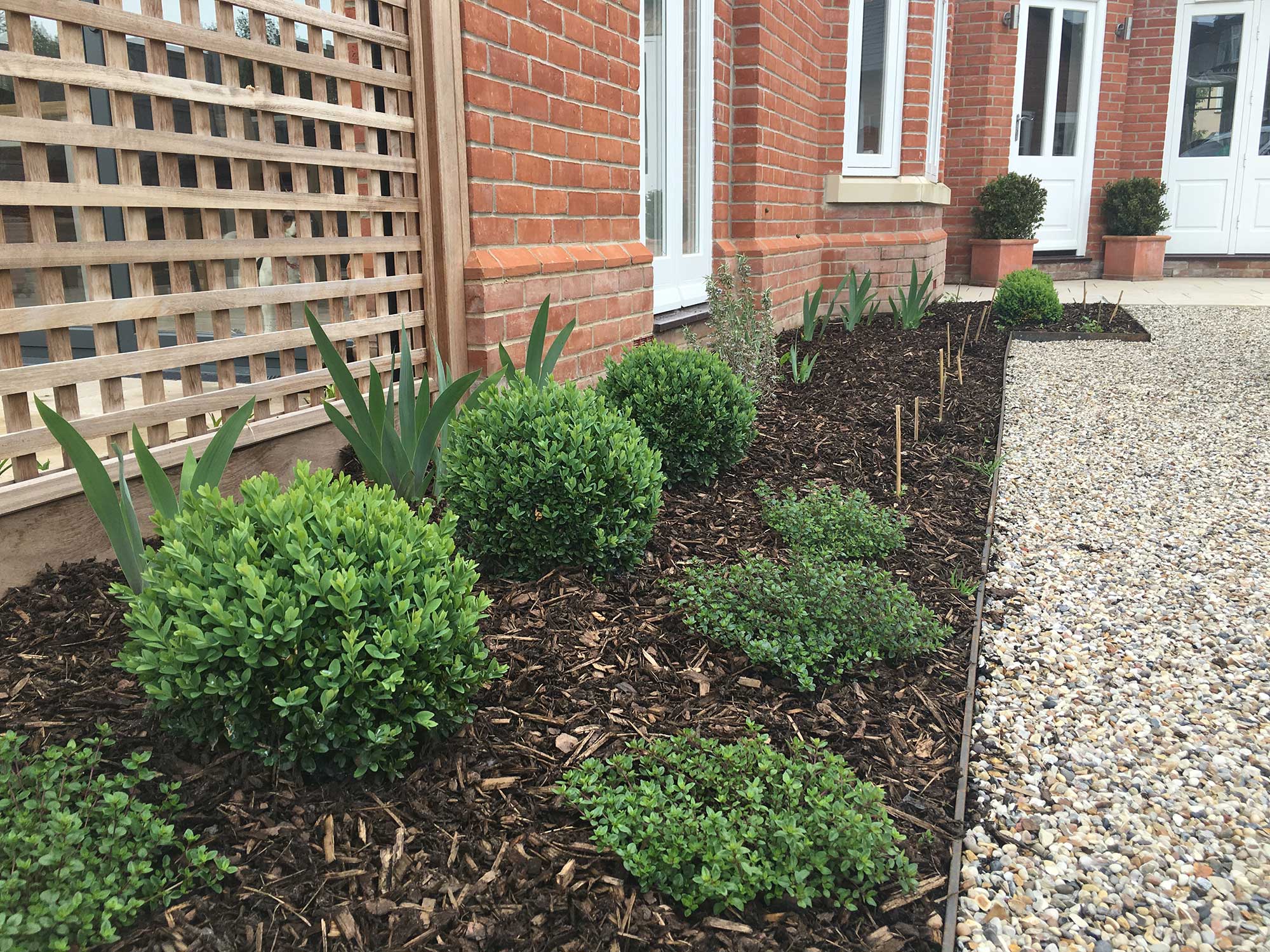
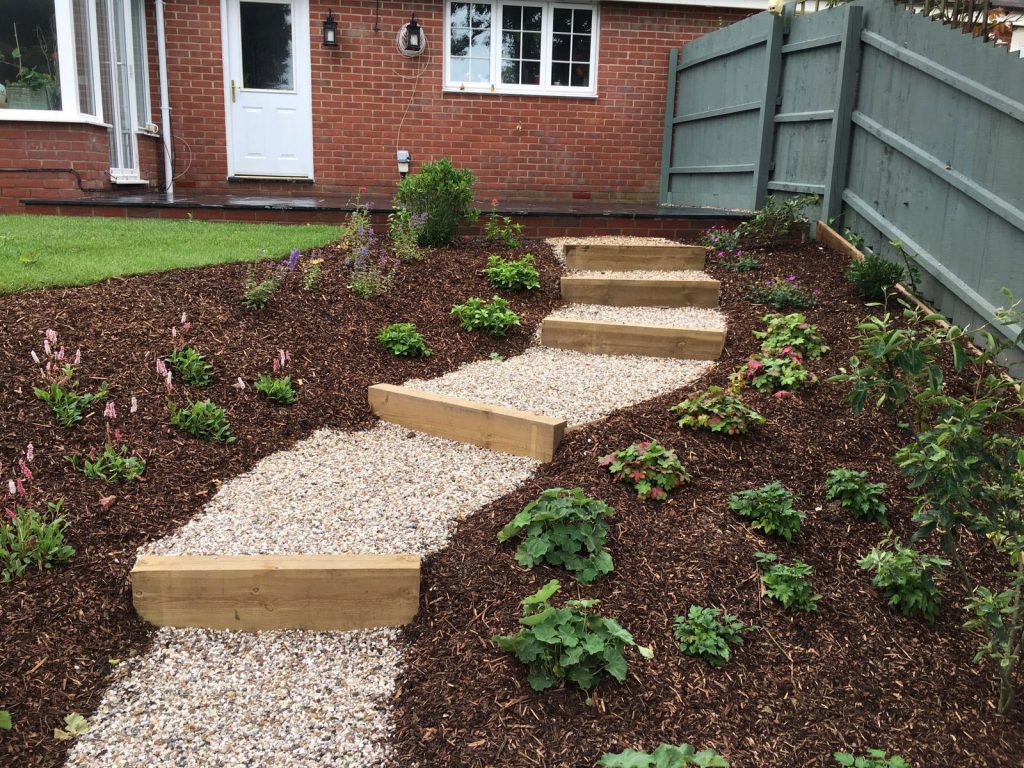
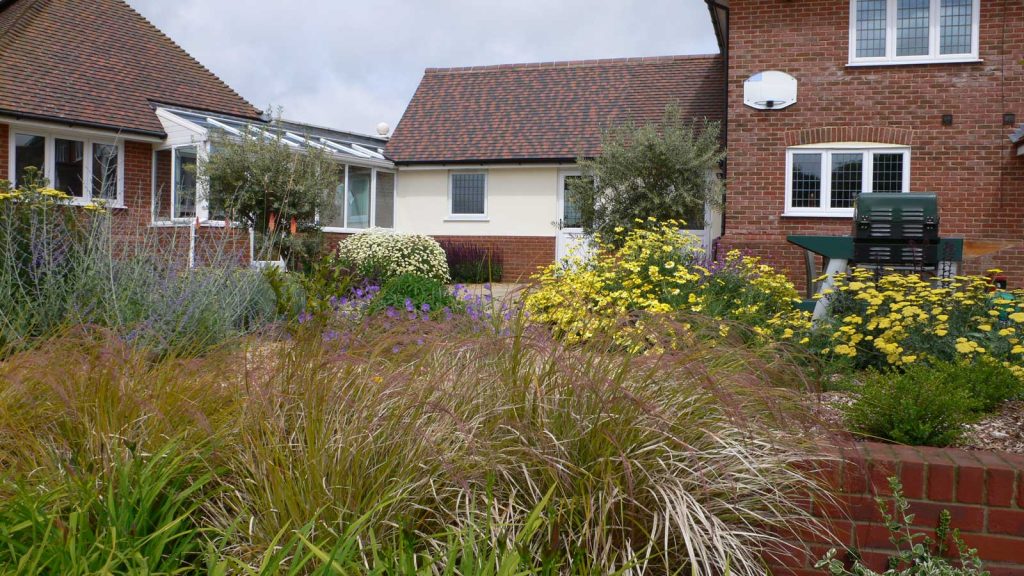
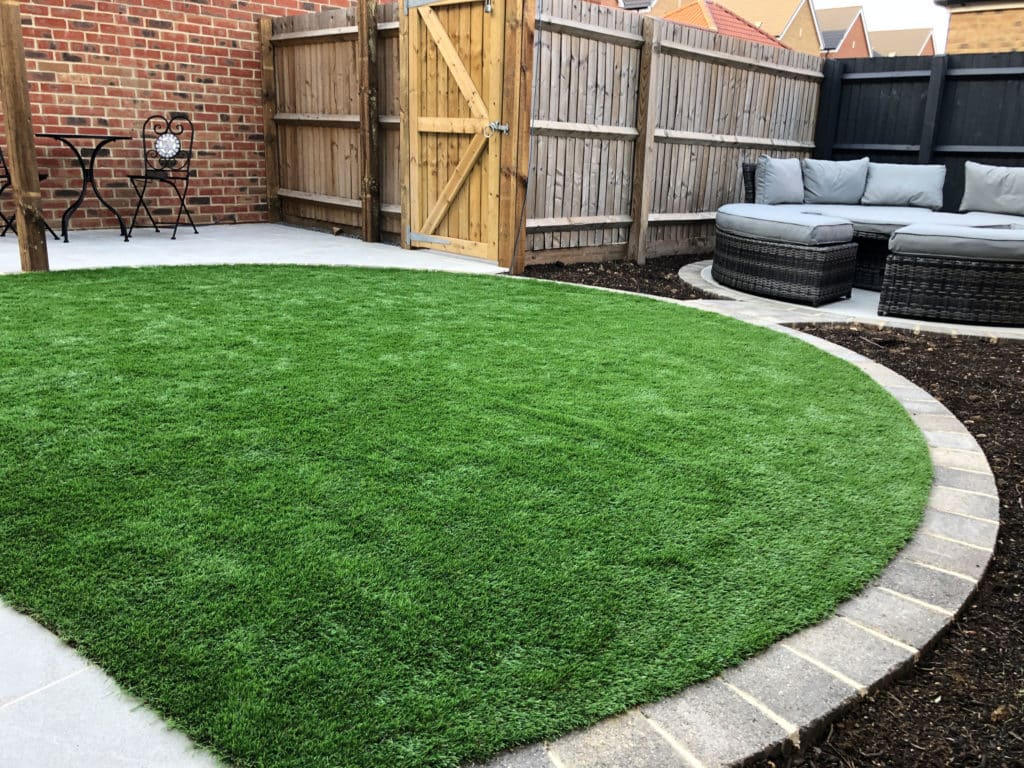
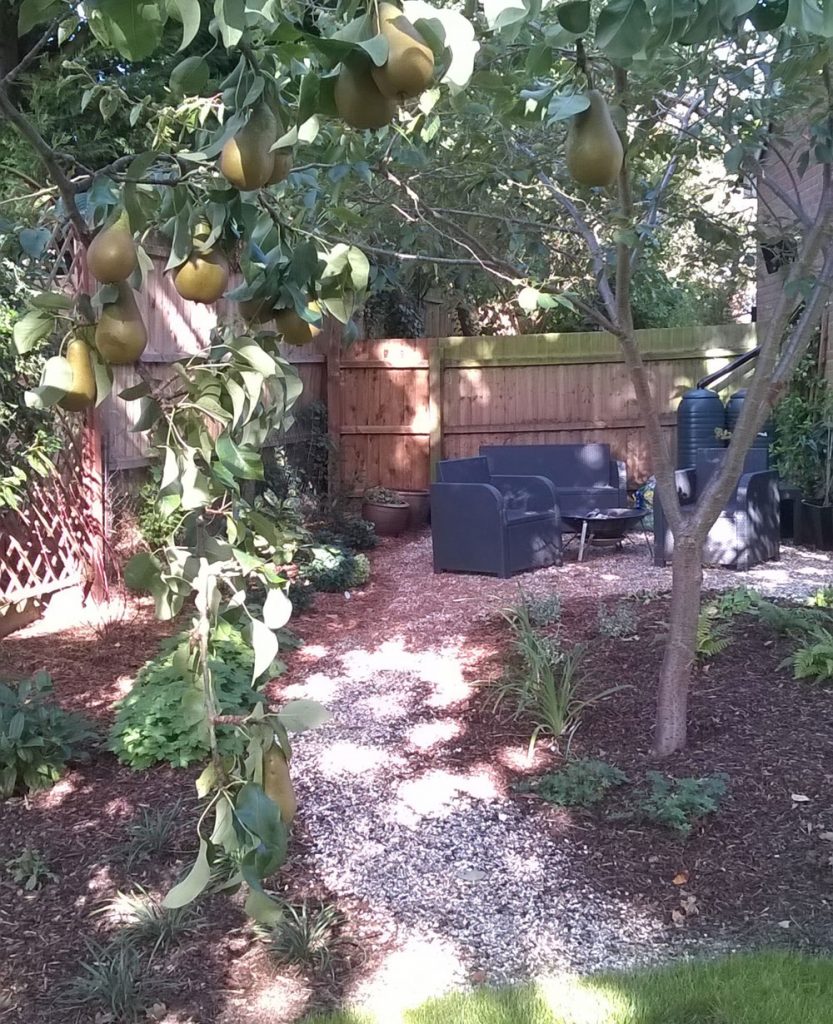
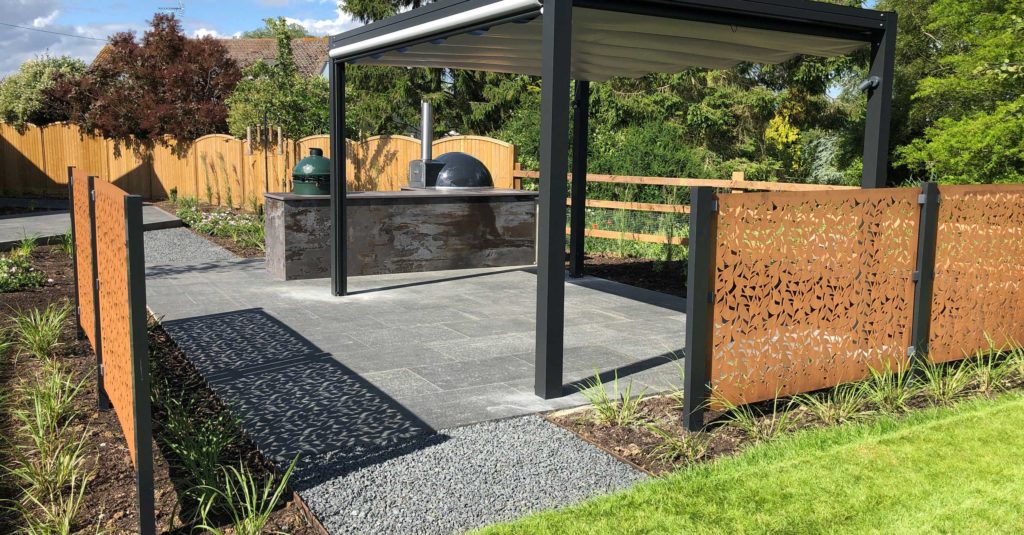
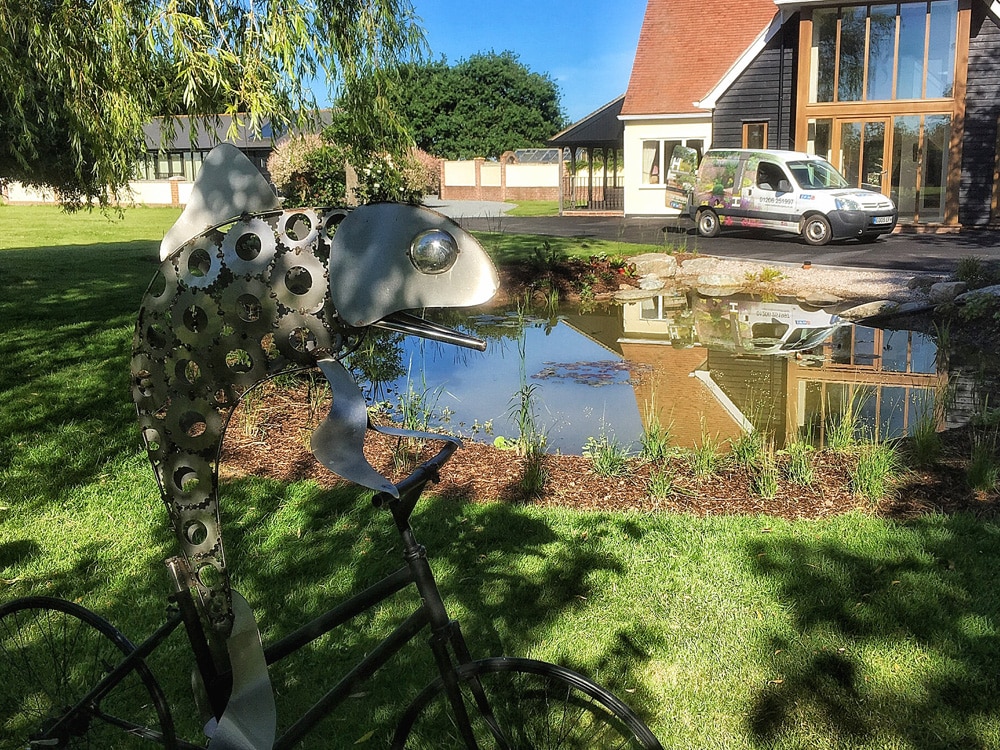
Sorry, the comment form is closed at this time.